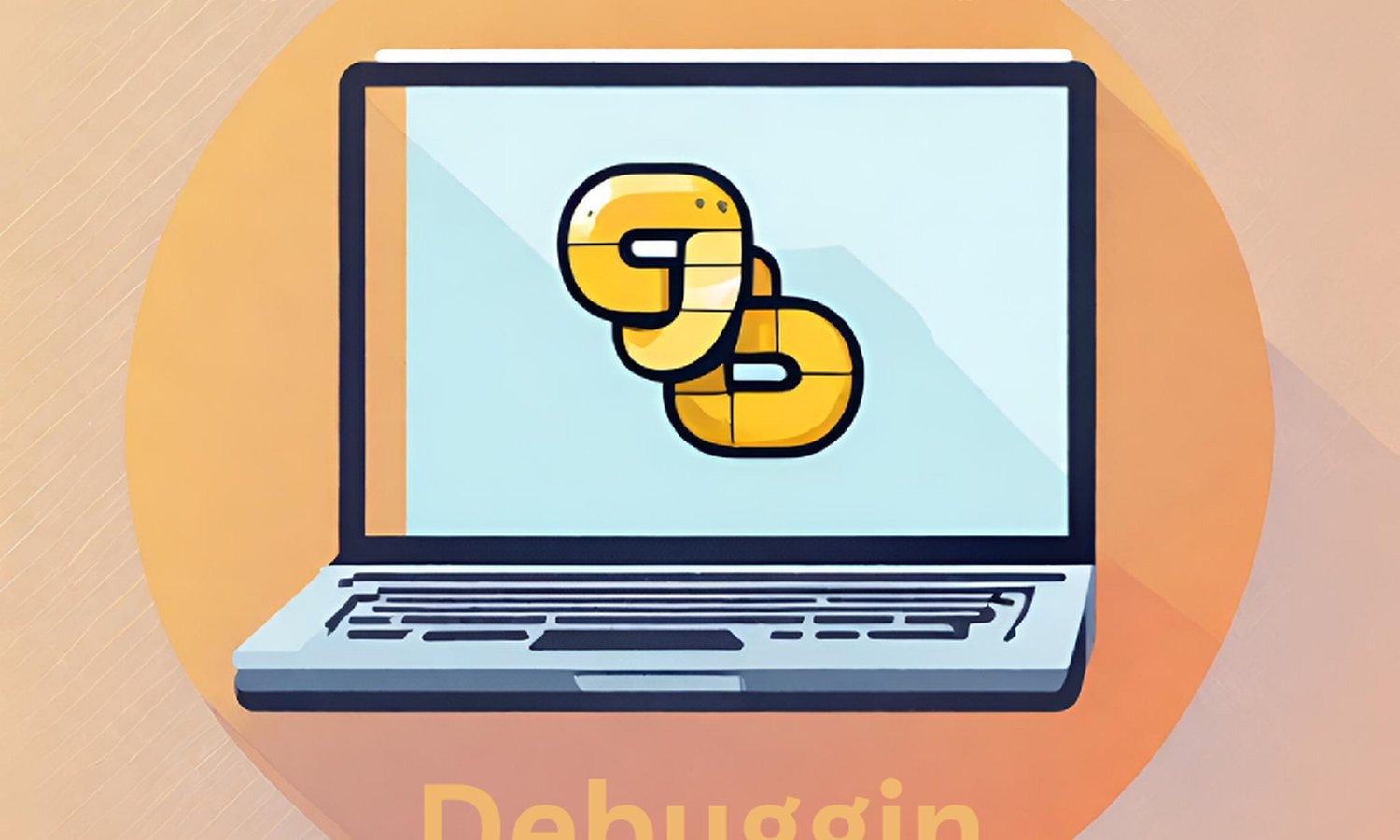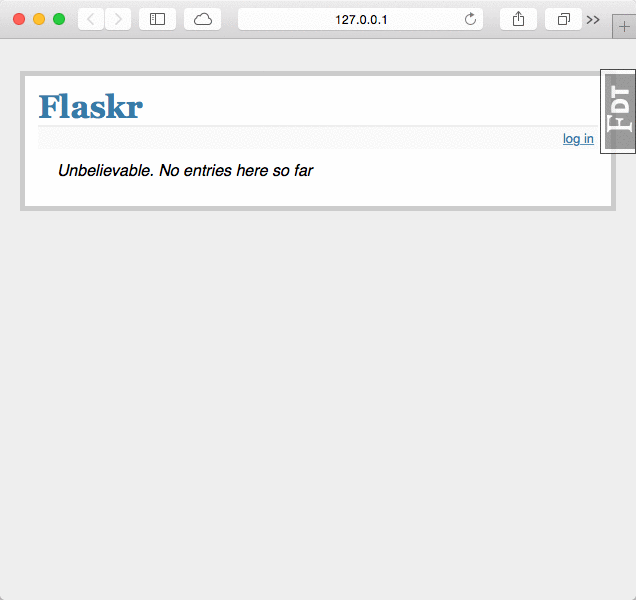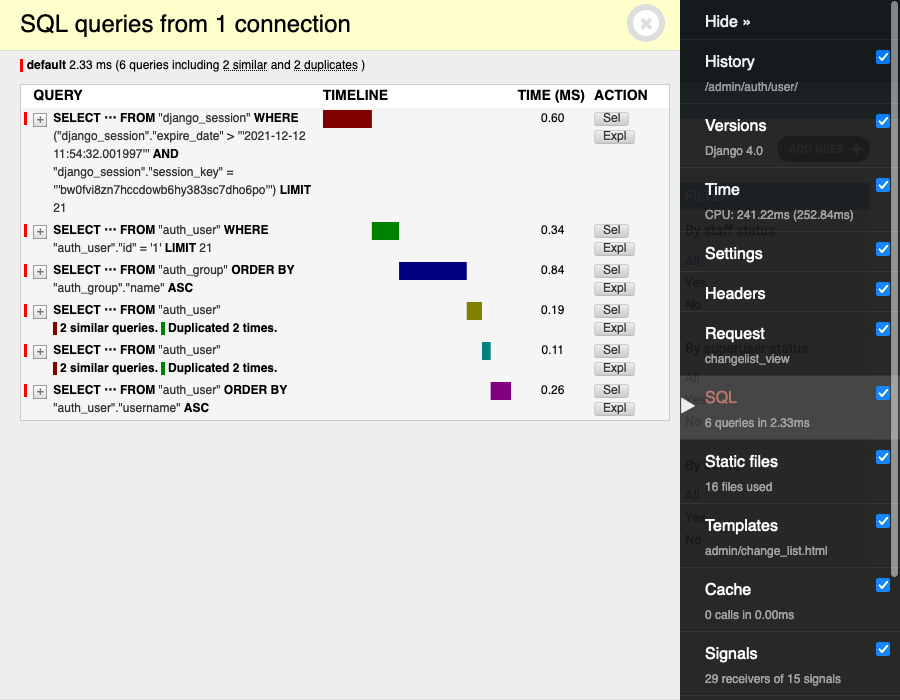DjangoとFlaskウェブアプリケーションのデバッグとモニタリング包括ガイド
By JoeVu, at: 2023年10月23日17:51
Estimated Reading Time: __READING_TIME__ minutes


1. はじめに
Webアプリケーション開発のダイナミックな世界において、デバッグとモニタリングの2つの実践は非常に重要な役割を果たします。これらの不可欠な活動は、Webアプリケーションの信頼性、パフォーマンス、および機能性を確保します。汎用性の高いプログラミング言語であるPythonは、Django やFlaskなどの堅牢なWebフレームワークを提供しています。これらのフレームワークはWeb開発のプロセスを簡素化し、開発者がアクセスしやすくなります。しかし、信頼性が高く効率的なWebアプリケーションを構築する道のりは、コーディングだけでは終わりません。デバッグとモニタリングを十分に理解することも含まれます。
この包括的なガイドでは、Pythonで最も人気のある2つのWebフレームワークであるDjangoとFlaskを使用して開発されたWebアプリケーションのデバッグとモニタリングの複雑さを探求する旅に出かけます。
2. Pythonでのデバッグ
Pythonでのデバッグプロセスの理解
デバッグとは、コード内の問題やエラーを特定して解決するプロセスです。これはすべての開発者にとって不可欠なスキルです。Pythonでは、デバッグプロセスは通常、問題のあるコードセグメントの特定、それらが問題である理由の理解、そしてそれらを修正するためのソリューションの発見を含みます。
Pythonにおける一般的なデバッグツールの紹介
Pythonは、デバッグプロセスを容易にするためのツールとテクニックのセットを開発者に提供します。以下はいくつかの基本的なものです。
-
基本的なデバッグのためのprint文:最も単純なデバッグ方法は、コードの特定のポイントに
print文を挿入して変数の値を表示し、プログラムのフローを確認し、特定の条件が満たされているかどうかを確認することです。基本的な方法ですが、迅速なチェックや簡単なトラブルシューティングには効果的です。
-
対話型デバッグのためのPythonの組み込みデバッガ(pdb):Pythonは
pdbと呼ばれる強力な組み込みデバッガを備えています。pdbを使用すると、ブレークポイントを設定し、コードをステップ実行し、変数を検査し、デバッグプロセス中に対話的にコードを実行することもできます。コード実行の詳細な調査には特に役立ちます。
-
Pythonにおける高度なデバッグツールとテクニック:より高度なデバッグには、
pdb++やIPythonなどのツールを検討してください。pdb++は、構文の強調表示や改良されたコマンドラインインターフェースなどの追加機能を備えたpdbの拡張バージョンです。IPythonは、コードイントロスペクション、構文の強調表示、およびより優れたデバッグ機能を提供する拡張対話型Pythonシェルです。
-
ブレークポイント(Python 3.7以降):pdbが提供するものと似ていますが、より新しいものです。
3. DjangoとFlaskでのデバッグ
開発者向けのローカルデバッグテクニック
-
print文の使用
DjangoやFlask、そして他のPythonコードと同様に、DjangoやFlaskでのデバッグの基本的な方法の1つは、
print文を使用することです。コード内に戦略的にprint文を配置することで、変数の値を観察し、アプリケーションのフローを監視し、特定の条件が満たされているかどうかを確認できます。このアプローチは簡単ですが、迅速なチェックや基本的なトラブルシューティングを行うには非常に効果的です。Flaskアプリケーションで変数の値を検査したいシナリオを考えてみましょう。
from flask import Flask
app = Flask(__name)
@app.route('/')
def hello():
name = "John"
print(f"Hello, {name}!")
return f"Hello, {name}!" -
Pythonの組み込みデバッガ(pdb)の使用
より詳細で対話的なデバッグには、
pdbとして知られるPythonの組み込みデバッガが貴重なツールとなります。開発者は、ブレークポイントを設定し、コードをステップ実行し、変数を検査し、デバッグプロセス中に対話的にコードを実行できます。このレベルの対話性は、複雑な問題を調査する場合に特に役立ちます。DjangoまたはFlaskアプリケーションで
pdbを使用するには、デバッグを開始する場所に次の行を挿入します。
import pdb # デバッグを開始する場所に挿入
pdb.set_trace()
コードの実行がpdb.set_trace()行に達すると、step、continue、printなどのさまざまなコマンドを使用して、コードを対話的にナビゲートして検査できます。
-
ブレークポイント(Python 3.7で導入)
breakpoint関数:Python 3.7以降のバージョンでは、コードにブレークポイントを設定するプロセスを簡素化する組み込みbreakpoint関数が導入されました。breakpoint関数が呼び出されると、その時点でPythonデバッガ(pdb)がアクティブになり、変数を検査してコードをステップ実行できます。
def some_function():
x = 10
breakpoint() # ここでデバッガをアクティブ化 y = x * 2
サーバーでのリモートデバッグ
- エラーログの確認
Webアプリケーションがホストされているリモートサーバー環境では、問題を監視して調査することが不可欠です。ほとんどのWebサーバー(例:Apache、Nginx)とアプリケーションサーバー(例:Gunicorn、uWSGI)は、通常、デフォルトでエラーをログに記録します。これらのエラーログを確認して、DjangoまたはFlaskアプリケーションの問題を特定できます。これらのログの具体的な場所は、サーバー構成によって異なります。
- デバッグフラグの有効化
DjangoとFlaskはどちらも、開発中により詳細なエラー情報を提供するデバッグモードを提供しています。Djangoでは、settings.pyファイルのDEBUG設定をTrueに設定できます。
DEBUG = True
Flaskでは、Flaskアプリを作成する際にdebugパラメーターをTrueに設定することでデバッグを有効にできます。
app = Flask(__name)
app.debug = True -
pdbを使用したリモートデバッグの活用
リモートサーバーで実行されているコードを対話的にデバッグする必要がある場合、Pythonの組み込みデバッガであるpdbが役立ちます。未処理の例外が発生したときにデバッガをアクティブにするために、--noreloadと--pdbフラグを使用してDjangoまたはFlaskアプリケーションを開始します。
python manage.py runserver --noreload --pdb # Django
flask run --pdb # Flask
この構成により、SSH経由でサーバーに接続し、例外が発生したときにデバッガを使用できます。この機能により、リモートサーバー上の問題の診断プロセスが簡素化されます。

4. デバッグツール
Django、Flask、またはその他のPythonアプリケーションを使用している場合でも、高度なデバッグツールの可用性は、問題を効率的に特定して解決する上で大きな違いを生みます。
Pythonのデバッグエコシステム
Pythonの広範なエコシステムは、デバッグ機能を強化する豊富なデバッグツールとライブラリを提供します。主要なコンポーネントの一部を検討しましょう。
-
pdb++とIPython
-
pdb++:Pythonの組み込みデバッガ(
pdb)を基盤として、pdb++は構文の強調表示、改良されたコマンドラインインターフェース、およびより優れたイントロスペクション機能などの拡張機能を提供します。複雑な問題の診断を簡素化し、優れた選択肢となります。 -
IPython:IPythonは、コードイントロスペクション、構文の強調表示、および拡張デバッグ機能を提供する対話型Pythonシェルです。コードを対話的に操作し、変数をオンザフライで検査し、デバッグプロセスを合理化できます。
-
-
統合開発環境(IDE)
PyCharm、Visual Studio Code、Jupyter Notebookなどの最新の統合開発環境には、統合デバッグツールが装備されています。これらのツールは、コードステップ実行、変数検査、およびリアルタイムデバッグなどの機能を提供します。プログラムの実行フローの理解を簡素化するユーザーフレンドリーなグラフィカルインターフェースを提供することがよくあります。
-
サードパーティ製のデバッグライブラリ
Pythonの人気により、標準ライブラリを超えた追加機能を提供するさまざまなサードパーティ製のデバッグライブラリが誕生しました。注目すべき例をいくつか紹介します。
- Django Debug Toolbar:Django開発者向けに調整されたこのデバッグツールキットは、SQLクエリ、HTTPリクエスト、テンプレートレンダリングに関する詳細な情報を提供します。Djangoアプリケーションの最適化には、ゲームチェンジャーとなる可能性があります。
これらの高度なデバッグツールとライブラリは、ダイナミックで強力なデバッグ環境を作成します。複雑なコード、大規模なプロジェクト、またはDjangoやFlaskのような複雑なフレームワークを扱っている場合でも、これらのツールはWebアプリケーションのトラブルシューティングと最適化に役立ちます。
5. エラーログ
エラーログの重要性
-
基本的なログ記録のためのPythonのloggingモジュール
効果的なエラーログは、DjangoおよびFlaskアプリケーションの問題を特定、診断、および解決するために不可欠です。Pythonは、ファイルやコンソールなどのさまざまな出力にメッセージ(エラーを含む)を記録できる組み込み
loggingモジュールを提供しています。このモジュールを利用することで、アプリケーションの基本的なエラーログを始めることができます。Pythonで基本的なロガーを設定する例:
import logging
logging.basicConfig(filename='app.log', level=logging.ERROR)
logger = logging.getLogger('myapp')
try:
# ここにコードを記述
except Exception as e:
logger.error("An error occurred: %s", str(e)) -
サードパーティ製のログライブラリ
Pythonの組み込みログは基本的なニーズには十分ですが、サードパーティ製のログライブラリはより高度な機能と柔軟性を提供します。注目すべきオプションをいくつか紹介します。
-
オンラインログサービスとの統合
最新のWebアプリケーションは、ログの中央集中型ストレージと管理を提供するオンラインログサービスとの統合から多くのメリットを得ることがよくあります。これらのサービスは、リアルタイムの監視、分析、およびアラートを提供します。いくつかの一般的なオプションを以下に示します。
-
Sentryによるリアルタイムエラー追跡:Sentryは、リアルタイムエラー追跡を専門とする広く使用されているサービスです。詳細な情報を提供してアプリケーションのエラーをキャプチャして報告し、迅速に問題に対応してシームレスなユーザーエクスペリエンスを維持できます。
-
Rollbarによるエラー監視とアラート:Rollbarは、包括的なエラー監視とアラートサービスです。リアルタイムのエラー通知を提供し、問題を迅速に特定して解決するのに役立ちます。Rollbarの統合と柔軟なアラートオプションは、DjangoとFlaskの開発者にとって貴重な資産となります。
-
Logglyによるログ管理:Logglyはログ管理と分析を提供し、ログデータを収集して一元化できます。効果的なログ管理のための検索、視覚化、およびアラートなどの機能を提供します。
-

6. エラー通知
エラー通知の必要性
-
smtplibを使用したメール通知の送信
エラー通知は、Webアプリケーションの信頼性を維持するための重要な側面です。エラーが発生した場合は、関連する関係者に迅速に通知することが不可欠です。これを実現する最も簡単な方法の1つは、メール通知を送信することです。Pythonの
smtplibライブラリを使用すると、DjangoまたはFlaskアプリケーションで特定のエラーまたは例外が検出されたときにメール通知を送信できます。smtplibを使用してメール通知を送信する例:import smtplib
from email.mime.text import MIMEText
def send_error_email(subject, message):
# メール設定
smtp_server = "smtp.example.com"
smtp_port = 587
smtp_username = "your_username"
smtp_password = "your_password"
from_address = "[email protected]"
to_address = "[email protected]"
# メールを作成して送信
msg = MIMEText(message)
msg["Subject"] = subject
msg["From"] = from_address
msg["To"] = to_address
with smtplib.SMTP(smtp_server, smtp_port) as server:
server.starttls()
server.login(smtp_username, smtp_password)
server.sendmail(from_address, [to_address], msg.as_string()) -
サードパーティ製のコミュニケーションツールとの統合
より効率的なエラー通知のために、Slack、Microsoft Teams、またはPagerDutyなどのサードパーティ製のコミュニケーションツールとの統合を検討してください。これらのプラットフォームはリアルタイムのコミュニケーションとアラートを提供し、エラーが発生するとすぐに適切な関係者に通知されます。
-
Slack:Slackは、さまざまなサービスからの通知を受信するための統合オプションを提供しています。Webhookを設定して、特定のSlackチャンネルまたはユーザーにエラーメッセージを送信できます。
-
Microsoft Teams:Microsoft Teamsも統合機能を提供しています。特定のイベント(エラーなど)がアプリケーションで発生したときに、Teamsチャンネルにメッセージを送信するようにコネクタを構成できます。
-
PagerDuty:PagerDutyは、インシデント対応と管理を目的としたプラットフォームです。包括的なアラートとオンコールスケジューリングを提供し、適切な関係者にリアルタイムでアラートを送信します。
-
-
Celeryとタスクキューを使用した非同期エラー通知
エラー通知の効率性を高めるために、Celeryやタスクキューなどのツールを使用して非同期通知を実装できます。非同期処理により、エラー通知がバックグラウンドで送信されている間、アプリケーションはスムーズに実行され続けます。
エラー通知プロセスをデカップリングすることで、アプリケーションのパフォーマンスに影響を与えることなく、通知を指定された受信者に確実に送信できます。
7. デバッグとモニタリングのためのオンラインサービス
オンラインサービスの紹介
-
人気のあるオンラインサービスの概要
Web開発の時代において、オンラインサービスはDjangoとFlaskアプリケーションのデバッグとモニタリングの向上に重要な役割を果たします。これらのサービスは、従来のエラーログと通知を超えた機能の範囲を提供し、開発者がアプリケーションを積極的に管理、最適化し、貴重な洞察を得ることを可能にします。
-
Sentryによるエラー追跡
- Sentry:Sentryは、リアルタイムエラー追跡を専門とする有名なオンラインサービスです。DjangoとFlaskアプリケーションにシームレスに統合され、例外的に詳細なエラーをキャプチャして報告します。Sentryはアプリケーションの健全性の包括的なビューを提供し、迅速に問題に対応してシームレスなユーザーエクスペリエンスを維持できます。
- Sentry:Sentryは、リアルタイムエラー追跡を専門とする有名なオンラインサービスです。DjangoとFlaskアプリケーションにシームレスに統合され、例外的に詳細なエラーをキャプチャして報告します。Sentryはアプリケーションの健全性の包括的なビューを提供し、迅速に問題に対応してシームレスなユーザーエクスペリエンスを維持できます。
-
Rollbarによるリアルタイムアラート
- Rollbar:Rollbarは、包括的なエラー監視とアラートサービスです。リアルタイムのエラー通知を提供することに優れており、問題を迅速に特定して解決できます。Rollbarの統合と柔軟なアラートオプションは、DjangoとFlaskの開発者にとって貴重な資産となります。
- Rollbar:Rollbarは、包括的なエラー監視とアラートサービスです。リアルタイムのエラー通知を提供することに優れており、問題を迅速に特定して解決できます。Rollbarの統合と柔軟なアラートオプションは、DjangoとFlaskの開発者にとって貴重な資産となります。
-
Logglyによるログ管理
- Loggly:Logglyは、ログデータの収集、一元化、および分析を容易にするログ管理サービスです。効果的なログ管理のための検索、視覚化、およびアラートなどの機能を提供します。Logglyは、アプリケーションの動作とパフォーマンスに関する深い洞察を得るために、DjangoとFlaskアプリケーションと統合できます。
- Loggly:Logglyは、ログデータの収集、一元化、および分析を容易にするログ管理サービスです。効果的なログ管理のための検索、視覚化、およびアラートなどの機能を提供します。Logglyは、アプリケーションの動作とパフォーマンスに関する深い洞察を得るために、DjangoとFlaskアプリケーションと統合できます。
-
New Relicによるパフォーマンス監視
- New Relic:New Relicは、エラー追跡を超えたパフォーマンス監視サービスです。アプリケーションのパフォーマンスに関する深い洞察を提供し、ボトルネックを特定し、コードを最適化し、優れたユーザーエクスペリエンスを提供できます。特にパフォーマンスが優先される場合、New RelicはDjangoとFlaskアプリケーションに貴重な追加機能となります。
- New Relic:New Relicは、エラー追跡を超えたパフォーマンス監視サービスです。アプリケーションのパフォーマンスに関する深い洞察を提供し、ボトルネックを特定し、コードを最適化し、優れたユーザーエクスペリエンスを提供できます。特にパフォーマンスが優先される場合、New RelicはDjangoとFlaskアプリケーションに貴重な追加機能となります。
-
Datadogによるパフォーマンスとエラーデータ
- Datadog:Datadogは、アプリケーションのパフォーマンスと健全性に関するリアルタイムの洞察を提供する包括的な監視と分析プラットフォームです。パフォーマンスデータ、エラーメトリックなどをキャプチャするためにDjangoとFlaskと統合し、アプリケーションの動作に関する包括的なビューを提供できます。
- Datadog:Datadogは、アプリケーションのパフォーマンスと健全性に関するリアルタイムの洞察を提供する包括的な監視と分析プラットフォームです。パフォーマンスデータ、エラーメトリックなどをキャプチャするためにDjangoとFlaskと統合し、アプリケーションの動作に関する包括的なビューを提供できます。
-
Raygunによるエラー追跡と報告
- Raygun:Raygunは、問題を迅速に特定、診断、および解決することに重点を置いたエラー追跡および報告サービスです。エラーのグループ化、ユーザー追跡、展開追跡などの機能を提供し、アプリケーションの信頼性を維持しようとするDjangoとFlaskの開発者にとって強力な資産となります。
- Raygun:Raygunは、問題を迅速に特定、診断、および解決することに重点を置いたエラー追跡および報告サービスです。エラーのグループ化、ユーザー追跡、展開追跡などの機能を提供し、アプリケーションの信頼性を維持しようとするDjangoとFlaskの開発者にとって強力な資産となります。
-
Airbrakeによるエラー監視
- Airbrake:Airbrakeは、リアルタイムでエラーを追跡して診断できるエラー監視とアラートサービスです。DjangoとFlaskアプリケーションにシームレスに統合され、エラーの根本原因に関する詳細な洞察を提供します。
- Airbrake:Airbrakeは、リアルタイムでエラーを追跡して診断できるエラー監視とアラートサービスです。DjangoとFlaskアプリケーションにシームレスに統合され、エラーの根本原因に関する詳細な洞察を提供します。
-
AppSignalによるアプリケーションパフォーマンス
- AppSignal:AppSignalは、アプリケーションのパフォーマンスと信頼性に関する洞察を得るのに役立つパフォーマンス監視とエラー追跡サービスです。エラー追跡、パフォーマンスメトリック、カスタムイベント追跡など、さまざまな機能を提供し、高品質のアプリケーションを維持する能力を高めます。
- AppSignal:AppSignalは、アプリケーションのパフォーマンスと信頼性に関する洞察を得るのに役立つパフォーマンス監視とエラー追跡サービスです。エラー追跡、パフォーマンスメトリック、カスタムイベント追跡など、さまざまな機能を提供し、高品質のアプリケーションを維持する能力を高めます。
-
Bugsnagによるエラー追跡と診断
- Bugsnag:Bugsnagは、アプリケーションエラーに関する包括的な洞察を提供するエラー追跡と診断サービスです。リアルタイムのエラー監視、安定性スコア、および詳細なエラー診断を提供し、DjangoとFlaskアプリケーションをスムーズに実行するのに役立ちます。
- Bugsnag:Bugsnagは、アプリケーションエラーに関する包括的な洞察を提供するエラー追跡と診断サービスです。リアルタイムのエラー監視、安定性スコア、および詳細なエラー診断を提供し、DjangoとFlaskアプリケーションをスムーズに実行するのに役立ちます。
-
Google Cloudユーザー向けのGoogle Cloud Operations Suite
- Google Cloud Operations Suite:Google Cloudユーザーは、高度な監視、エラー追跡、およびログ記録機能を提供するGoogle Cloud Operations Suiteを利用できます。Google CloudでホストされているDjangoとFlaskアプリケーションにシームレスに統合され、アプリケーションのパフォーマンスと信頼性を管理するための堅牢なプラットフォームを提供します。
8. まとめ
Webアプリケーション開発の急速に変化する世界において、デバッグとモニタリングは不可欠な実践です。DjangoまたはFlaskフレームワークを使用している場合でも、Webアプリケーションの信頼性、パフォーマンス、および機能性を確保するには、これらの重要なタスクを十分に理解する必要があります。この包括的なガイドでは、Pythonの人気のあるWebフレームワークのコンテキストにおけるデバッグとモニタリングの複雑な状況を探求しました。
結論として、デバッグとモニタリングはWebアプリケーション開発における継続的なプロセスであることを認識することが重要です。適切なツールとサービスを採用することで、問題を積極的に解決し、パフォーマンスを最適化し、シームレスなユーザーエクスペリエンスを提供できます。開発者は、これらのツールをワークフローに統合して、デバッグとモニタリングをWebアプリケーション開発の道のりの不可欠なコンポーネントにすることをお勧めします。
DjangoとFlaskによるWebアプリケーション開発の旅を続ける中で、警戒を怠らず、適切なツールを備えていることが、インターネットのダイナミックな状況において目立つ堅牢で信頼性が高く、高性能なアプリケーションを構築するための鍵であることを覚えておいてください。





